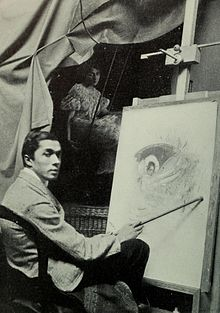With thanks to a very dear friend in America who sent me information regarding Frank.
Franz Xavier Leyendecker was born in Montabaur, Germany on 19th January 1876. In 1884 he emigrated with his parents and three siblings to Chicago, U.S.A., where an uncle owned the McAvoy Brewery.
Frank studied at the Art Institute in Chicago and between 1895 and 1897 he studied at the Académie Julian in Paris, France. His elder brother, Joseph Christian Leyendecker (1874 – 1951) also became an artist and was premier cover illustrator for the magazine “Saturday Evening Post” for much of the first half of the 20th century
Frank became known for his stained glass work as well as his illustrations for posters, books, magazines and advertisements. He provided artwork for advertisements for Kum-a-Part jewelry, E. Howard Watch Company, Franklin automobiles, Kuppenheimer clothes, Right Posture clothes, Ohio Electric Car Company, Remington Arms/Union Metallic Cartridge, Durham hosiery, and BVD underwear.
He painted covers for a large number of mass-readership magazines including Street & Smith pulp magazines, such as People's Favorite Magazine and The Popular Magazine, as well as for Fawcett's pulp magazine Battle Stories.
Frank’s artwork for Battle Stories was initially produced as a WWI recruitment poster and reprinted as a pulp magazine cover by Fawcett Publications in 1931. His work was described as an "important feature" of the second exhibition of the Society of Illustrators at the International gallery in New York.
Frank died on 18th April 1924.













